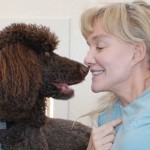“You’re not going to like this,” Nana said.
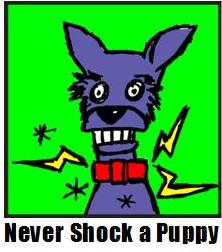 It was 1991 and Morgaine, my chocolate Standard Poodle, was six months old. Nana had been making weekly puppy training trips to our house from the day after I brought Morgaine home at ten weeks of age the previous November. I was bound and determined to have a dog I could take anywhere with me including to my job at the University of Colorado where I was teaching at time. Nana was the go-to dog trainer in Boulder. She not only trained pet dogs and their people but she was an accomplished service dog trainer for a national organization. She was the best.
It was 1991 and Morgaine, my chocolate Standard Poodle, was six months old. Nana had been making weekly puppy training trips to our house from the day after I brought Morgaine home at ten weeks of age the previous November. I was bound and determined to have a dog I could take anywhere with me including to my job at the University of Colorado where I was teaching at time. Nana was the go-to dog trainer in Boulder. She not only trained pet dogs and their people but she was an accomplished service dog trainer for a national organization. She was the best.
Nana helped Morgaine to establish good habits like waiting at the open door before going outside. And, she showed me how to startle my puppy into being quiet in her crate by rapping the top of it with a used Coke can full of dried beans. Crying and barking predicted a scary noise and an uncomfortable vibrating kennel. It worked.
At 6 months of age Morgaine graduated to a new level of training, as was the custom with traditional compulsion style dog training. It was time for Morgaine to learn how to heel. Nana slipped the choke chain onto Morgaine’s neck and reminded me to establish the proper mind-set: “Remember, when you correct Morgaine it’s very important that you do not do it out of anger. Be matter-of-fact. If you’re feeling frustrated, stop!”
Then she told me that if done properly it should take only one or two very well-timed jerks on the leash and choke collar to establish Morgaine’s heeling position.
“You do it,” I said.
Nana took the lead from me and at precisely the moment Sadie stepped in front of her left leg, Nana gave a little upwards jerk. Morgaine startled for a moment and then fell into place next to Nana’s left knee after which she released the pressure of the choke chain. Morgaine became pretty good at walking on a loose leash.
Fast-forward fifteen years.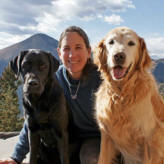 It’s November 2006. Once again I made an appointment with Nana to meet my ten-week old puppy, Sadie, three days after her homecoming.
It’s November 2006. Once again I made an appointment with Nana to meet my ten-week old puppy, Sadie, three days after her homecoming.
What a difference fifteen years made! Nana had totally and completely crossed-over from compulsion training to reward-based training, for lack of a better term. No choke chains, no jerks, no pops. Good-bye Coke cans full-of-beans, and hello clickers and all the things Sadie loved!—tennis balls, food treats, tug, stuffed animal toys, playing with her doggie friends—whatever she’d work for, whatever motivated her.
I was confused by the all the new learning theory concepts and terminology and utterly spastic trying to coordinate clicking and treating in rapid succession.
“What changed?” I wanted to know.
Nana told me she had had the opportunity to observe service dogs that had been clicker trained.
“Those dogs were so skilled and so happy. The organization I worked for turned out very well-trained dogs, but they just weren’t as joyful as the clicker trained dogs. I saw a clear difference. I wanted to train dogs that were reliable, skilled and tail-wagging happy while doing their jobs. I wanted dogs who loved their work.”
In addition to her ah-ha moment with the service dogs, Nana had the most excellent good-fortune to apprentice with Marian Breland Bailey who had been a student of B.F. Skinner, and her husband, Bob Bailey. After that, there was no turning back for Nana.
As you might know, the Baileys were no slouches when it came to training all sorts of animals to do all sorts of intricate behaviors using positive reinforcement, or in ordinary language, giving the animal something they like a lot (For Sadie that would be sharp cheddar cheese, thank you very much.) as a consequence for doing the desired behavior. The idea is that positive reinforcement increases the likelihood of the animal performing the behavior again.
Here’s a story Nana told. I’ll never forget it. Have you ever wondered how compulsion trained service dogs learn to perform the desirable behavior of dropping something they are holding in their mouths, say their person’s keys? Well, some trainers pinch the dog’s ear with their fingernails sometimes drawing blood, or painfully twist the dog’s ear until the dog drops what’s in her mouth. The precise moment the dog drops the keys the pinching or twisting stops. In Skinner-speak that’s called negative reinforcement meaning that the aversive (pinching, twisting) is taken away (that’s the negative part) as a consequence of the dog doing the desired behavior, dropping the keys. Negative reinforcement also increases the likelihood of a behavior occurring again. But, why use negative reinforcement when you can use positive reinforcement?
And, how would you use positive reinforcement to get the dog to release the keys? The Bailey’s were geniuses at this. They broke the desired behavior down into tiny, tiny, pieces and positively reinforced the animal as a consequence for doing each tiny piece successfully. In the case dropping the keys you might reward (positively reinforce) the dog for the slightest relaxation of her mouth around the keys and go on, step by step, from there.
But what about when the animal does what you don’t want him to? For the Baileys that might have been when an animal looked left instead of right while learning a particular set of behaviors necessary for an intricate sleuthing mission for the US government. For us it might be our dog crying and barking while in her crate. Whereas many trainers then, and still now, delivered positive punishment, or added (that’s the positive part) something aversive (that’s the punishment part), like banging a can of dried beans on the top of the crate as I did with Morgaine, as a consequence for undesired behavior, Skinner and his students did otherwise. They just ignored the undesired behavior and waited for the animal to do the desired behavior and positively reinforced her for that.
That’s how Sadie learned to be quiet in her crate. When she whaled and threw a tantrum, I just ignored her. I waited her out. I withstood the commotion. This was not easy! At the first hint of silence, I fed her liver pate. Other times I would just catch her in the act of being quiet in her crate. More liver pate. Soon she was dependably calm when crated.
Nana also taught me to sometimes use negative punishment when Sadie offered an undesired behavior. I know, this language is nuts! “Professor Skinner! People hear negative and they think bad not the removal or subtraction of something! What were you thinking?”
I’ll try to explain. Let’s use the pulling on a leash example. Whereas Nana popped Morgaine’s leash (positive punishment—adding an aversive), she taught me a whole new way with Sadie. Click and treat her for staying near me (positive reinforcement) and if she pulled ahead on her leash, stop dead and stand stone still. How is that negative punishment you wonder? Well, I’m taking away (that’s the negative part) what Sadie wants, moving forward (the reinforcing part). Sometimes this is called “being a tree.” Maybe you’ve heard of it.
If being a tree is not your cup of kibble, there are lots of other ways to use positive reinforcement to accomplish loose leash walking. Check out this video and this one.
In 1991 I learned to train my dog by relying primarily on positive punishment—like leash jerks on choke chains or crashing cans of beans; some negative reinforcement, letting up on the choke collar after Morgaine perfomed the behavior I wanted—‘sitting’ for example; and some positive reinforcement usually in the form of happy talk after she responded to the leash jerk.
Let me say a word about shock collars in this context. I never considered using a shock collar, but if I had, positive punishment and negative reinforcement is what I would have done. Even if contemporary shock collars are more sophisticated in the levels and types of electric currents they deliver to dogs’ necks, they work by the trainer using them to administer positive punishment and negative reinforcement, by inflicting an aversive stimulus or ceasing to transmit one, respectively. And, in order for those behavioral consequences to be effective in changing a dog’s behavior they have to cause the dog enough discomfort so that the dog quits doing whatever she is doing when she receives the electric current.
In 2006 I learned to train my dog using primarily positive reinforcement—liver bits, a ball toss, freedom to play with her doggie pal when she ‘sat’ or ‘downed’ or ‘stayed’; rarely negative punishment—withholding something she wanted in the face of ‘not sitting’ or pulling on her leash; and occasional very mild positive punishment like stepping in front of Sadie if she started to exit car before ‘waiting.’ I also learned to stop some behaviors by simply ignoring them, like begging at the table.
Would I rather be my dog in 1991 or in 2006? Would I prefer being jerked when I did something wrong and grow wary of trying new things because I might get hurt if I didn’t get it right? Or, would I rather feel happier and safer figuring out what my person wanted because when I did good things happened?
Which ‘me’ would I rather be? The 1991 or 2006 model? Would I rather keep a look out for what my dog does wrong and punish her for it, or cultivate a keen eye for catching my dog in the act of behaving well and reward her for that?
I’m so grateful to Nana for crossing over and for turning me on to the wonderful, wide world of reward-based training. It’s changed my life and probably saved Sadie’s. She a fearful, sensitive dog. I can’t imagine she would have developed the confidence she has, and be as joyful as she is if I had stayed stuck in my traditional training ways.
Tags: Behavior, Bob Bailey, Clicker, Clicker training, Dog behavior, Electric shock collar, Fearful dogs, Karen Pryor, Marian Breland Bailey, Nana Will, Never shock a puppy, Reward Based Dog Training, Shock collar










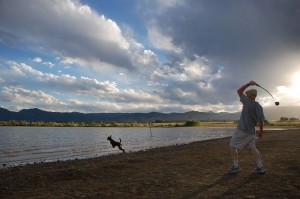
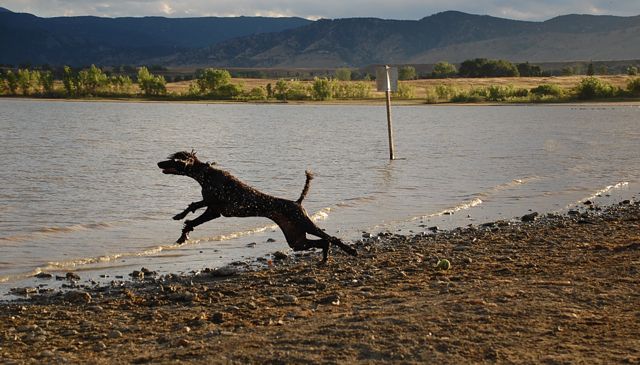




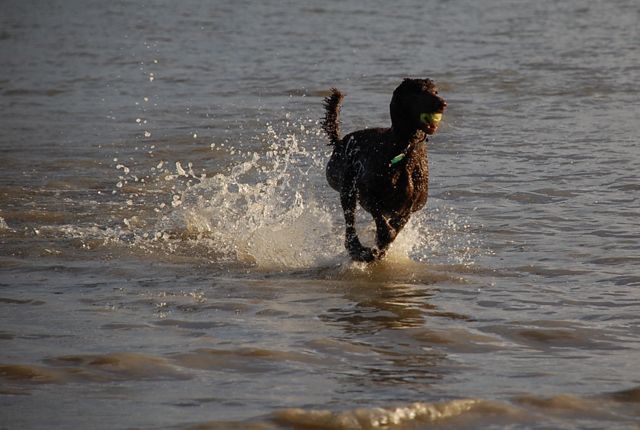
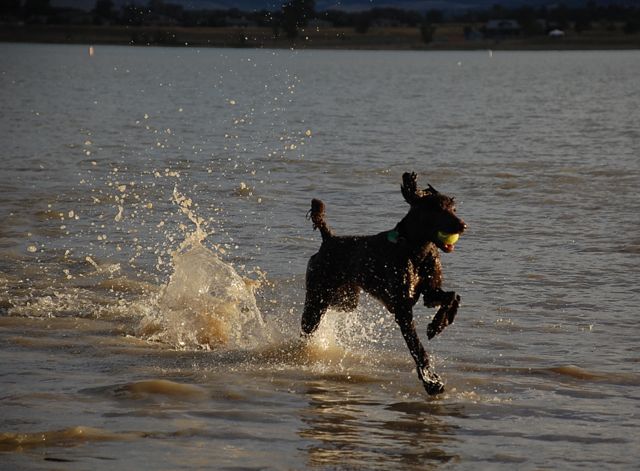
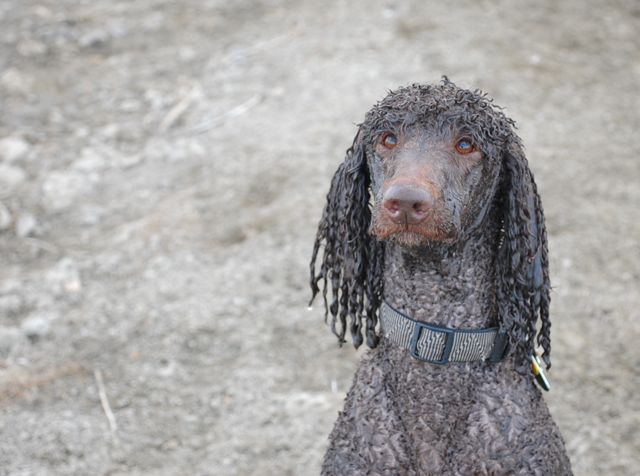
 This Friday’s fab 4 is 10, ah make that 9. Stay with me. I’ll tell you more in a moment.
This Friday’s fab 4 is 10, ah make that 9. Stay with me. I’ll tell you more in a moment.

